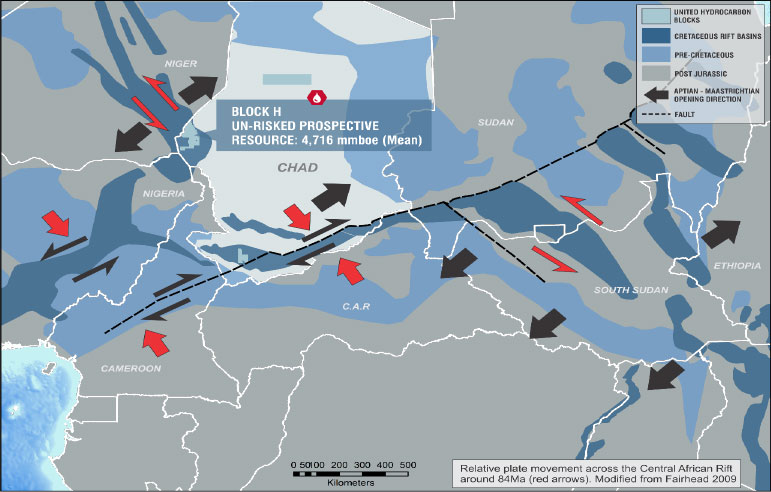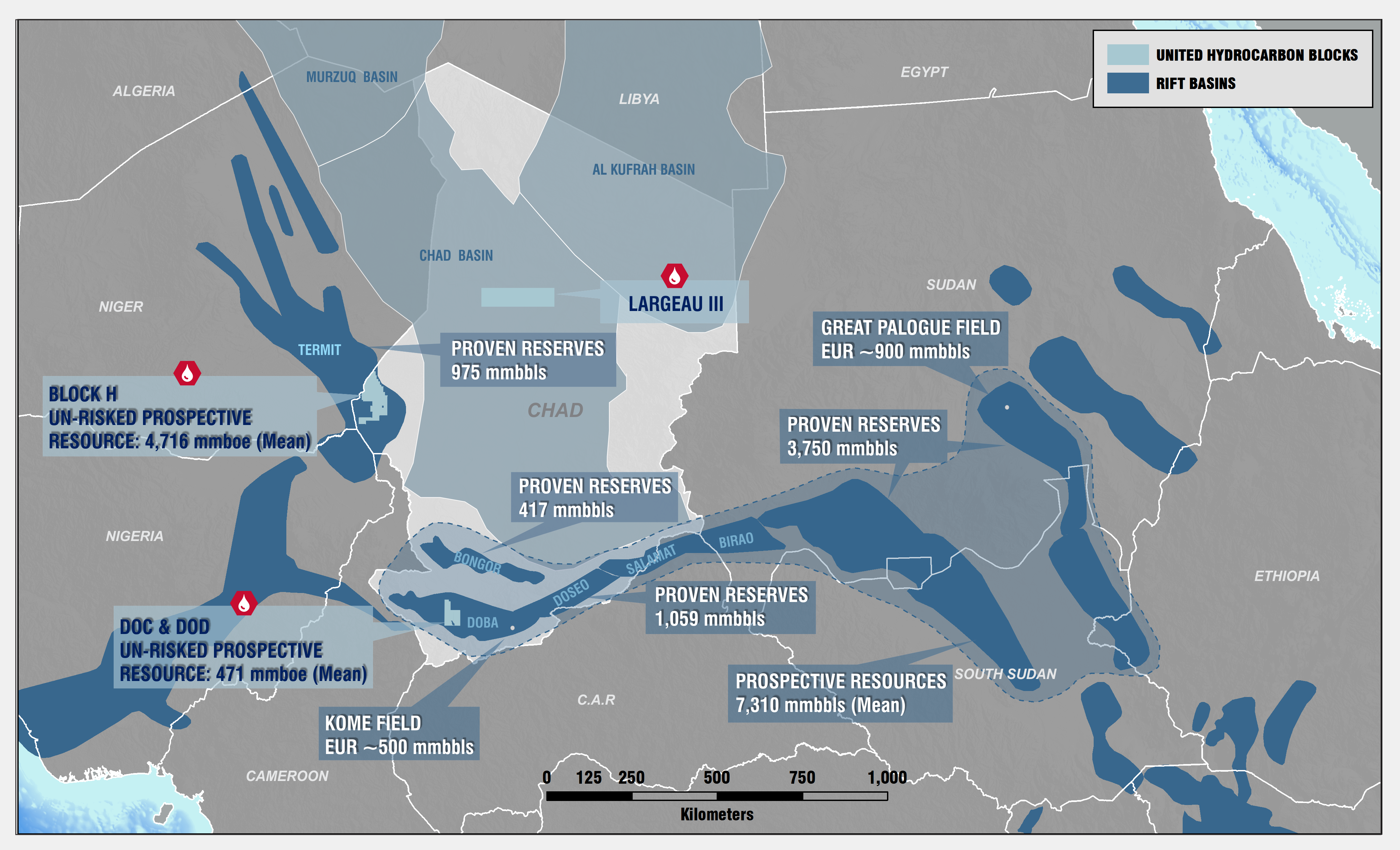
PRODUCTION HISTORY
- Systematic Hydrocarbon Exploration of the Central African rift basins in this region was pioneered by Conoco in Chad in 1969.
- First Oil was discovered in 1974 by Conoco in the Termit Basin near Lake Chad.
- The most prolific discovery to date was in the Doba Basin by Exxon and partners in 1989.
- This grouping of 7 producing fields in Doba and centered around the Kome field formed the commercial driver for the Chad-Cameroon pipeline project and was brought on-stream in 2003.
- The Kome and area fields have since produced ~ 500k bbls of oil to date.
- With the success of Kome fields and the sustained stability in the region, other international operators, CNPC and Glencore have successfully developed oilfields in the region and are currently producing into the Chad-Cameroon export pipeline.
- The future of the oil and gas industry in Chad is promising with many under explored regions holding the potential for future commercial discoveries.
GEOLOGY - WEST CENTRAL AFRICAN RIFT SYSTEM

- The petroleum rich geological environment in Chad occurs because of the presence of the West-Central African Rift System (WCARS).
- This rift system is divisible into the Western African Rift System (WARS) and Central African Rift System (CARS) which, although separate systems, are genetically related.
- The West and Central African Rift Systems are failed rift basins dating from Early Cretaceous or Late Jurassic and are bound by extension faults of large displacement and uplifted Precambrian crystalline rock.
- The basins (rifts) are genetically and physically linked and formed in response to far field stresses related to the formations of the South Atlantic Ocean and fragmentation of Gondwanaland.
- Depending on orientation, some basins have experienced extension, other strike-slip motion, and still other transtension or transpression.
- The WARS and CARS offer a myriad of complex structures and basin geometries ranging from variously orientated extensional fault blocks, shear zones, inversion structures, and positive and negative flower structures.
PROLIFIC RIFT BASIN SYSTEM
- The WCARS and its associated basins represent a world class opportunity for oil and gas exploration and development underpinned by proven reserves and producing fields as well as significant, highly prospective and underexplored resources.
- The main Western African Rift System basins include the Grein, Kafra, Tenere, Tefidet, Termit, Bongor and N’Dgel Edgi Basins. The main Central African Rift System basins in Chad are the Doba, Doseo and Salmat Basins.
- The Doba Basin is part of the Central African Rift System (CARS) located at the southwest portion of Chad and is separated from the Doseo Basin by a large inversion anticline trending NE-SW, placed along the Pan-African Shear Zone.
- The Doba Basin was formed as a rift basin in the early Cretaceous (144-100 Ma), during the break-up of Gondwana and the opening of the South Atlantic Ocean.
- United’s Block H sits in the Termit Basin, the largest intracratonic basin in north-central Africa that was influenced by Cretaceous and Tertiary rifting.
- The Termit basin’s exposure to marine influences through the Benue trough to the south provides significant petroleum potential.





